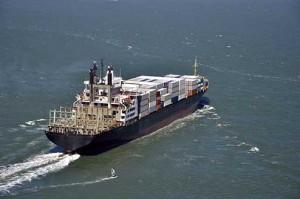Improvements reduce costs and help the environment.
Going ‘green’ isn’t a movement; it’s a way of life. With rising fuel costs and customer expectations for retailers  to be ‘green’ increasing, it’s becoming more important for retail supply chains to keep pace to win customers in the competitive retail environment. In Canada, going ‘green’ not only reduces a company’s carbon footprint, it also improves efficiency and, if done right, can reduce delivery times of products to customers.
to be ‘green’ increasing, it’s becoming more important for retail supply chains to keep pace to win customers in the competitive retail environment. In Canada, going ‘green’ not only reduces a company’s carbon footprint, it also improves efficiency and, if done right, can reduce delivery times of products to customers.
Most Canadian retailers import a large percentage of the goods they sell from Asia using western Canadian ports in Vancouver and Prince Rupert. All of this freight is then shipped directly to distribution centers in Ontario and Québec. From there, it’s processed and shipped out to retail locations or distribution centers in other parts of the Canada.
These movements can be costly in terms of time, money and fuel consumption, particularly when western Canadian locations are involved. With approximately 30 percent of the Canadian population living in British Columbia and Alberta, one-third of the freight is moving from the west coast to eastern Canada only to be shipped back west.
For freight that stays on the west coast, companies need to set up a crossdocking or transloading process. This separates freight that will remain in western provinces, shipping it directly to stores or distribution centers. This reduces fuel and carbon consumption, while improving delivery time by seven to 10 days. This is a win-win-win for companies with savings in fuel, cost and product availability.
Improvements in the shipping process from Asia to Canada have also been helpful in reducing carbon emissions. With 80 percent of international trade moving by sea, these savings have been significant.
Ships have reduced their sailing speeds to lower their fuel cost per container. This is the same thing many people do when driving their car. They save fuel, and money, by driving 60 mph (100 kph) instead of 75 mph (120 kph).
Most ocean carriers are also building bigger ships so they can carry more containers per trip. The largest of these ships is longer than the Empire State building is tall. Ten years ago, the largest ships would move just 5,000 containers. Newer ships can move between 8,000 and 9,000 containers.
Combining the slower speeds with the larger ships reduces carbon emissions associated with ocean shipping by more than 30 percent.
Other “green” improvements include shared transportation methods, optimizing warehouse space and smarter scheduling. Shared networks have many benefits including improved cubing of containers by consolidating across customers, increasing the number of shipments from low-volume locations, reducing the number of less-than-truckload (LTL) shipments through shared container space and by using other network optimization improvements mentioned above.
With proper planning, shared networks and the use of new shipping innovations on land and at sea, Canadian retailers can reduce their carbon footprint, improve their supply chain and exceed their customers’ expectations.
Written by Guy Toksoy, VP of Canada Supply Chain Operations for Ryder System Inc. Guy Toksoy is Vice President of Ryder Canada’s Supply Chain Solutions business segment. He is responsible for directing the development and operations of logistics solutions for Ryder’s global and domestic customers.

